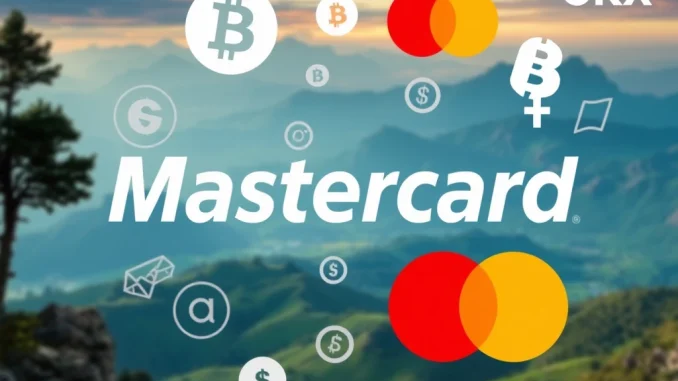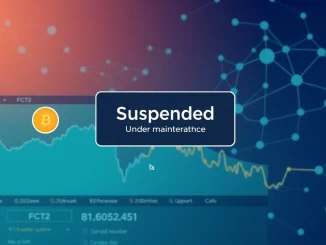
Big news is hitting the wires! Mastercard, a global leader in payments, is making a significant push into the world of digital currencies, specifically focusing on Mastercard stablecoin capabilities. This isn’t just a small pilot; it involves integrating stablecoins into core payment functions and includes a major partnership that could reshape how people interact with their crypto.
Mastercard Stablecoin Capabilities: What’s Happening?
Mastercard has announced new functionalities designed to bring stablecoins closer to everyday transactions. These capabilities span several key areas:
Wallet Integration: Making it easier for users to connect their stablecoin wallets directly to the Mastercard network.
Merchant Settlement: Enabling businesses to potentially receive settlements in stablecoins, offering alternatives to traditional fiat processes.
On-Chain Remittances: Facilitating faster and potentially cheaper cross-border payments using stablecoins on blockchain networks.
This move signals Mastercard’s recognition of stablecoins as a viable tool for efficient and cost-effective digital transactions.
The OKX Card: Bridging Crypto Trading and Real-World Spending
As part of this strategic push, Mastercard is partnering with the cryptocurrency exchange OKX to launch the “OKX Card.” This collaboration is a tangible example of how these new capabilities will be brought to users.
The OKX Card aims to directly link a user’s crypto trading activities on the OKX platform with Mastercard’s extensive global payment network. While specific details on how the card functions (e.g., direct stablecoin spending vs. on-the-fly conversion) will be crucial, the general idea is to allow OKX users to spend their crypto holdings more easily in the physical and online world wherever Mastercard is accepted. This initiative directly addresses a common challenge in the crypto space: converting digital assets into spendable currency without friction.
Why Focus on Stablecoin Payments? Benefits and Potential
The choice of stablecoins for these new capabilities is deliberate. Unlike volatile cryptocurrencies like Bitcoin or Ethereum, stablecoins are designed to maintain a stable value, typically pegged to a fiat currency like the US dollar. This stability makes them much more practical for everyday transactions, merchant payments, and remittances.
Implementing stablecoin payments offers several potential advantages:
Speed: Transactions on blockchain networks can settle faster than traditional banking systems, especially for cross-border payments.
Cost: Transaction fees for stablecoin transfers can be lower than traditional wire transfers or credit card processing fees.
Accessibility: Stablecoins can potentially provide financial services to unbanked or underbanked populations globally.
Transparency: Transactions recorded on a public blockchain offer a level of transparency not always present in legacy systems.
Mastercard’s involvement lends significant credibility and reach to the concept of using stablecoins for mainstream payments.
Implications for Crypto Payments and Beyond
This announcement has broad implications for the future of finance. For the crypto industry, it represents a major step towards mainstream adoption. Having a giant like Mastercard integrate crypto payments using stablecoins can accelerate acceptance among businesses and consumers who might be hesitant about direct interaction with volatile assets or complex blockchain technology.
For traditional finance, it shows a clear embrace of digital asset technology. Instead of seeing blockchain and crypto as purely disruptive threats, companies like Mastercard are exploring how to leverage them to enhance their existing services and reach new markets. This could spur further innovation and competition in the payments sector.
The partnership with OKX also highlights the increasing convergence between centralized crypto platforms and traditional financial infrastructure. The OKX Card serves as a bridge, making it easier for millions of OKX users to utilize their digital assets in daily life.
Navigating the Challenges of Blockchain Payments
While the potential is significant, rolling out large-scale blockchain payments solutions like this comes with challenges:
Regulation: The regulatory landscape for stablecoins and crypto payments is still evolving globally, creating uncertainty.
Technical Integration: Seamlessly connecting diverse blockchain networks, wallets, and legacy payment systems is complex.
User Adoption & Education: Getting consumers and merchants comfortable with using stablecoins requires clear communication and simple interfaces.
Security: Ensuring the security of digital wallets and transactions on both the blockchain and traditional network sides is paramount.
Mastercard and OKX will need to navigate these hurdles effectively for widespread success.
Conclusion: A Glimpse into the Future of Transactions
Mastercard’s move to launch robust Mastercard stablecoin payment capabilities and partner with OKX for the OKX Card is more than just a product announcement; it’s a powerful signal about the future direction of payments. By leveraging the efficiency and speed of stablecoins and blockchain technology, while utilizing its vast existing network, Mastercard is positioning itself at the forefront of the evolving digital economy. This development could significantly accelerate the adoption of stablecoins and crypto assets for everyday transactions, bringing us closer to a world where digital currencies are seamlessly integrated into our financial lives. It’s a game-changing step for the payments industry and the crypto world alike.



